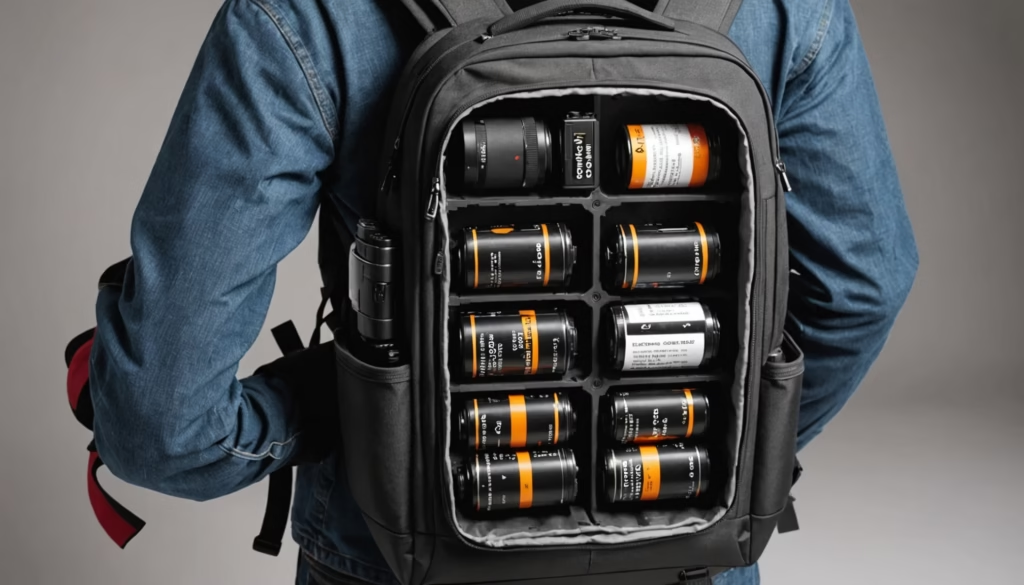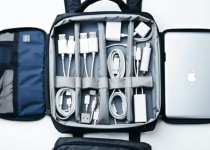How To Safely Carry Camera Batteries Inside A Backpack

If you’ve ever wondered how to safely carry camera batteries inside a backpack, you’re not alone. Between loose contacts, temperature swings, and the ever-present risk of short circuits, stashing spare power cells can feel tricky. In this guide, you’ll learn straightforward steps on gathering the right gear, preventing electrical hazards, managing temperature, and staying compliant with travel rules. Let’s dive in and keep your batteries—and your shots—fully charged.
Gather battery safety gear
Before you toss batteries into a random pocket, assemble a small kit of protective gear. Having dedicated accessories keeps cells from bumping into keys, coins, or each other.
Use dedicated battery cases
Most camera backpacks include padded dividers for your camera and lenses, but batteries deserve their own pouch. Look for a hard or semi-rigid battery case with individual slots. These cases:
- Cushion cells against drops
- Keep terminals from touching
- Let you quickly count spares at a glance
Add terminal covers
Even in a case, metal contacts can meet inadvertently. Silicone terminal caps or individual plastic sleeves slide over each end of a battery. If you don’t have covers on hand, wrap each battery’s ends with a small strip of electrical tape.
Choose storage locations
Wondering where to stash them? Picking the right pocket makes all the difference in safety and convenience.
Use internal padded pockets
Most camera backpacks have medium-sized compartments designed for small accessories. Slide your battery case into a padded pocket away from heavy gear. That way batteries avoid sharp lenses and minimize jostling.
If you store camera filters too, check out creative ways to store filters in a camera backpack for ideas on sharing space without risking damage.
Consider external pouches
An outside mesh or zip pocket gives fast access on the go. Just be mindful that water or theft could be more likely. If you opt for an exterior pouch, pair it with a weatherproof case and avoid overloading it with heavy items.
Prevent electrical hazards
Keeping batteries from sparking or draining suddenly means controlling contact and movement.
Avoid loose contacts
Loose batteries lying against other metal objects can short out in a flash. Never toss spare cells directly into a main compartment with coins, keys, or camera bodies.
Insulate battery terminals
That tiny gap between positive and negative ends matters. Always fit caps or sleeves before packing. If you’re in a pinch, tape works, but dedicated insulating covers feel more secure and reusable.
Why covers matter
Short circuits not only kill your battery, they can generate heat or smoke. Terminal insulation eliminates that risk entirely.
Control battery temperature
Heat and cold both reduce battery life and performance. Keeping your cells within a safe temperature range helps them last longer and stay reliable.
Keep batteries cool
Store spares in the coolest part of your pack—typically an outer side pocket away from direct sun or internal heat sources. In hot weather, consider a small gel pack wrapped in fabric. To avoid moisture-related issues, read how to prevent condensation inside camera backpacks.
Protect from overheating
After a long shoot, batteries can get warm. Let hot cells cool down in the open air before packing them away. Avoid stashing recently used batteries next to electronics or charging banks that generate extra heat.
Organize related accessories
A tidy backpack helps you spot batteries fast and reduces the chance of mishaps.
Pack chargers and cables
Keep chargers, USB cables, and power banks in a separate pouch from your batteries. That way pluggable contacts don’t accidentally meet battery terminals. If you need extra tips on arranging cords, check out organizing cables and chargers in a camera backpack.
Label battery compartments
Color-code cases or attach small tags so you know which cells are fresh, which need charging, and which are old. You can use:
- Colored stickers on each slot
- Numbered pouches (1, 2, 3…)
- A quick inventory note on your phone
Follow travel rules
Regulations vary by airline and country, so having a clear system keeps you compliant and hassle-free.
Airline and TSA guidelines
Most carriers let you carry spare lithium-ion batteries in your carry-on only, up to 100 watt-hours (Wh) each. Here’s a quick reference:
| Battery type | Carry-on allowed | Checked allowed | Notes |
|---|---|---|---|
| Lithium-ion (≤ 100 Wh) | Yes | No | Spare cells only in carry-on |
| Lithium-ion (100–160 Wh) | Yes (max 2) | No | Airline approval required |
| Alkaline (AA/AAA non-recharge) | Yes | Yes | No special rules |
For tips on selecting a compliant pack, see how to choose a camera backpack for air travel rules.
International travel tips
When hopping borders, always declare large sensor batteries if required. Check country-specific rules online before you go. Pack documentation or battery spec sheets in an easy-to-find pocket in case an inspector asks.
Frequently asked questions
How many spare batteries can I pack?
Most airlines allow up to two spare lithium-ion batteries between 100–160 Wh, plus unlimited cells under 100 Wh. Always confirm with your carrier’s policies before flying.
Can I store batteries in checked luggage?
No. Spare lithium-ion batteries must ride in your carry-on bag only. Only batteries installed in devices can go in checked bags.
What’s the safest way to carry battery chargers?
Keep chargers in a separate pouch with cable wraps so no loose wires touch your battery terminals. A small zip-pocket organizer works wonders.
Can extreme cold damage camera batteries?
Yes. Cold drains batteries fast and may cause permanent capacity loss. Store spares close to your body or inside insulated pouches when shooting in low temperatures.
Should I keep batteries fully charged during travel?
Aim to travel with batteries at around 40–60 percent. It’s a safety recommendation for lithium-ion cells and helps prolong their lifespan.
How do I prevent battery terminal corrosion?
Wipe terminals with a dry cloth before capping and storing. Avoid moisture and use silica gel packs to keep humidity low.
What’s the best battery case for travel?
Rigid battery cases with individual slots and rubberized exteriors offer top protection. Choose one sized for your specific battery model.
Wrap up key points
Safely carrying camera batteries inside your pack is all about organization, protection, and awareness. Gather the right cases, insulate terminals, control temperature, and follow airline rules to avoid surprises at the airport. With these simple steps, you’ll keep your cells—and your memories—fully powered and ready for every shot.
Ready to streamline your entire packing routine? Try one tip today, and let us know how it worked in the comments below.


